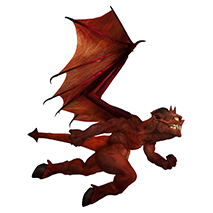War Kites and Flying Batteries
This article first appeared in Ragnarok 36 introducing war kites to Wessex Games’ Aeronef.
Extract from London Times March 5 1890
Long before the great Aeronefs had taken to the sky others had sored on the winds. Far away in the lands of the East daring men took their lives in their hands and flew high above the Earth supported only by bamboo and cloth. What once to we British was a pleasant diversion imported from far away and enjoyed in a strong breeze in the park will soon be a weapon in our arsenal against the foe who seek to invade our land. Yesterday over the white cliffs of Dover a series of daring experiments demonstrated how giant kites will soon add to the protection of our shores.
The first kite flew unmanned into the air trailing below it a heavy cable with which to entangle an invading flying machine. Given favorable winds a huge flock of such kites could control the aerial approaches to our coast and around cities allowing the British fleets to meet the opposition at a place of our choosing.
The second kite carried an explosive charge that could be dropped on a target passing below it. When the handler on the ground felt the enemy was beneath their kite they simply pull on a release and away the bomb goes. It is suggested that a few of these kites could be mixed in with the ordinary variety as a further deterrent to invasion. They may also be flown over vulnerable landing grounds to deter a conventional naval landing.
Finally, after some considerable preparations had been completed, two men flew aloft hanging beneath these flimsy flying machines. One carried a rifle with which he would be able to attack any exposed crew on an attacking flier. The other had what appeared to be a small cannon slung at his feet that the man from the war ministry assured us was capable of doing considerable damage to any aerial target it hit. After each had demonstrated their weapons these brave volunteers from our armed services gracefully returned to the ground using ‘Professor’ Baldwin’s famous parachutes.
The man from the ministry went on to explain that while these kites and other inventions currently under consideration for the defense of our homeland were not substitutes for more ‘Nefs and air ships they could make a valuable contribution to the war effort. The primary advantage of these kites and the moored balloon flying gun batteries, which were tested near London earlier in the week, was their relative cheapness, the ease and speed with which they could be constructed. Tactically their ability to funnel the enemy’s attack to a location where our fleets can be massed for battle is an advantage that the ministry has been searching for some time.
Flights of War Kites and Flying Batteries
A flight of war kites has 1 hull point and a speed of zero. A flight covers an area 3cm on a side and can only fly in favorable weather (determined by scenario conditions). Different types of kites cannot be identified at a distance of more than 5cm. Types 1 and 2 fly considerably higher than both ‘Nef and airships normally go and so can be passed under at the risk of damage to a vessel. Type 3a and Type 3b are normally flown with a mix of Type 1 kites acting as decoys. Frequently Type 1 kites are flown with crude mannequins slung beneath to further confuse the enemy.
The four different types attacks are described below.
Type 1
Reduce speed of vessel flying through by 1d6 and turn by 1d3.
Type 2
One Bomb Dice that can be dropped on any target passing below (including fliers)
Type 3a
Snipers can on a roll of 6 on 1d6 when firing against Balloons and a total of 12 on 2d6 when firing against Aeronefs disable a senior officer aboard. Roll 1d6 1-2:Vessel must either continue on current heading and speed for this turn, 3-4: may not fire or 5-6: may not drop bombs.
Type 3b
1 Gun Dice
The daring soldiers who fly type 3a and 3b kites are equipped with primitive parachutes for returning to the ground.
Flying Batteries
Flying Batteries are tethered airships placed near vulnerable targets and equipped with heavier armor and a larger number of guns. The altitude of these behomothic gun platforms is raised and lowered by a winch station on the ground that is vulnerable to bombing should the airship be destroyed. If it were destroyed by some other method the airship will drift off in the wind.
| Class | Hull Points | Gun Dice | Bomb Dice | Speed | Turn |
|---|---|---|---|---|---|
| 1(D) | 30 | 15 | 0 | 0 | 1 |
| 2(D) | 26 | 14 | 0 | 0 | 1 |
| 3(D) | 24 | 13 | 0 | 0 | 1 |
| 4(D) | 20 | 12 | 0 | 0 | 2 |
| 5(D) | 18 | 11 | 0 | 0 | 2 |
